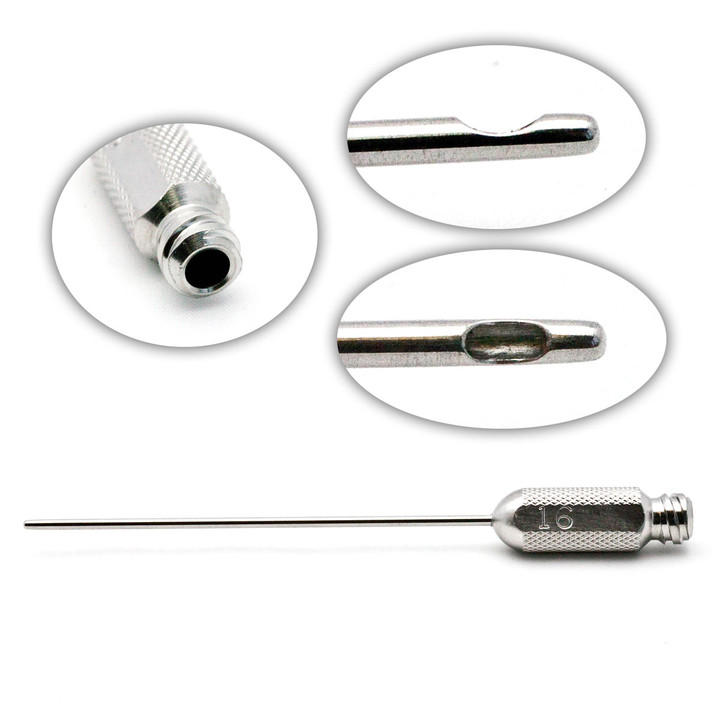Liposuction is one of the most popular cosmetic procedures globally, offering a solution for those who want to remove excess fat from specific areas of the body. Over the years, the procedure has evolved significantly, becoming safer and more efficient, largely due to innovations in the tools used. Among these tools, the infiltration liposuction cannula has emerged as a game changer. This article will explore how infiltration liposuction cannulas are transforming liposuction, alongside a look at tumescence cannulas, their applications, and the impact these technologies have on the procedure.
Table of Contents
- Introduction to Liposuction and Cannulas
- Understanding the Infiltration Liposuction Cannula
- The Role of Tumescence Cannulas in Modern Liposuction
- Differences Between Traditional Cannulas and Infiltration Cannulas
- Benefits of Using Infiltration Liposuction Cannulas
- Common Types and Sizes of Cannulas
- Best Practices for Surgeons Using Infiltration Liposuction Cannulas
- The Future of Liposuction: What’s Next?
1. Introduction to Liposuction and Cannulas
Liposuction, also known as lipoplasty or suction-assisted lipectomy, involves the removal of excess fat deposits from the body to improve body contours and proportion. Traditionally, liposuction was a highly invasive procedure, requiring large incisions and extensive recovery time. Today, thanks to technological advancements like the development of specialized liposuction cannulas, the procedure has become minimally invasive and much safer.
A cannula is a slender, hollow tube used by surgeons to extract fat from the body during the liposuction procedure. This device is inserted into small incisions, allowing surgeons to break up fat and remove it with the help of a suction machine. As medical technology advances, newer forms of cannulas, such as infiltration liposuction cannulas and tumescence cannulas, have been developed to improve the efficiency and safety of the procedure.
2. Understanding the Infiltration Liposuction Cannula
The infiltration liposuction cannula is a critical tool that has dramatically changed the liposuction landscape. Infiltration refers to the process of injecting a solution into the fat layer to help soften and break it down before it is removed. This procedure involves injecting a solution—usually a mix of saline, local anesthetic, and epinephrine—into the treatment area. The solution reduces bleeding, provides pain relief, and makes fat removal easier by breaking up fat deposits.
The infiltration cannula plays a vital role in this process, allowing surgeons to evenly distribute the solution into the targeted fat layers. The design of the cannula features multiple ports, ensuring that the solution is spread uniformly, making the fat easier to suction out while minimizing damage to surrounding tissues.
Key Features of the Infiltration Cannula:
– Multiple Ports: Unlike traditional cannulas, infiltration liposuction cannulas often feature multiple holes along the shaft, allowing for even distribution of the infiltration fluid.
– Various Sizes: The cannulas come in different sizes and diameters, allowing the surgeon to choose the appropriate tool based on the treatment area and amount of fat.
– Efficient Design: The slim design and advanced technology behind these cannulas ensure a smoother and more effective fat-removal process with minimal discomfort for the patient.
3. The Role of Tumescence Cannulas in Modern Liposuction
A tumescence cannula is another type of specialized liposuction cannula used in the tumescent technique of liposuction, which is widely recognized for its safety and effectiveness. This technique involves the injection of large volumes of a tumescent solution (containing saline, local anesthesia, and epinephrine) into the fatty tissue. The tumescence cannula is specifically designed for this purpose, ensuring the even distribution of the solution throughout the targeted area.
The tumescent technique allows for a more precise and controlled removal of fat, reducing bleeding, swelling, and bruising, which are common side effects of traditional liposuction. The cannula ensures that the solution is infiltrated properly, allowing the fat to become more fluid-like, making it easier to remove.
Key Benefits of the Tumescence Cannula:
– Accurate Fluid Infiltration: Ensures even distribution of the tumescent solution for optimal results.
– Patient Comfort: Reduces the need for general anesthesia, allowing patients to remain awake during the procedure.
– Safety: Minimizes post-operative bleeding and bruising due to the constricting effects of the epinephrine in the solution.
4. Differences Between Traditional Cannulas and Infiltration Cannulas
Before the advent of infiltration liposuction cannulas, liposuction procedures were conducted using traditional cannulas, which had limited capabilities. Traditional cannulas often caused more trauma to the surrounding tissues, leading to increased bruising, swelling, and a longer recovery period. The infiltration cannula, on the other hand, has a smoother design and multiple openings to minimize tissue trauma and distribute fluids effectively.
5. Benefits of Using Infiltration Liposuction Cannulas
There are several key benefits to using infiltration liposuction cannulas over traditional cannulas:
1. Improved Fat Removal Efficiency
The infiltration cannula allows for the even distribution of the fluid, making the fat deposits softer and easier to remove. This increases the overall efficiency of the liposuction procedure, reducing the time it takes to achieve the desired results.
2. Reduced Trauma
Because the fat is broken down more easily, there is less need for aggressive manipulation, meaning less trauma to the surrounding tissues. This results in reduced bruising, swelling, and a quicker recovery for the patient.
3. Smoother Results
The use of infiltration cannulas provides more controlled and precise fat removal, leading to smoother and more consistent results. Patients are less likely to experience irregularities in their skin texture, which can occur with older cannulas.
4. Minimized Complications
By reducing tissue damage, infiltration cannulas also lower the risk of complications like bleeding, infection, and excessive swelling. These tools allow for a more controlled and safe procedure, which is essential for patient satisfaction.
visit for more details about Nasal surgery instruments
6. Common Types and Sizes of Cannulas
Liposuction cannulas come in a variety of types and sizes, each designed for specific areas of the body or certain liposuction techniques. Surgeons select the appropriate cannula based on the patient’s needs, the area being treated, and the volume of fat being removed.
Common Types of Liposuction Cannulas:
– Infiltration Cannula: As described above, these cannulas are used to inject the tumescent solution into the fat layer.
– Aspiration Cannula: This is the cannula used to suction the fat out once the solution has been injected and the fat has been broken down.
– Micro Cannulas: These smaller cannulas are ideal for delicate areas like the face or chin, where precision is required.
– Mercedes Tip Cannula: A popular cannula design with three holes, allowing for effective fat suction with minimal damage to surrounding tissue.
Common Sizes of Liposuction Cannulas:
– Cannula diameters can range from 1 mm to 5 mm, with smaller cannulas being used for precision areas and larger ones for broader fat-removal zones like the abdomen or thighs.
– Cannula lengths also vary, typically ranging from 10 cm to 30 cm, depending on the area being treated.
7. Best Practices for Surgeons Using Infiltration Liposuction Cannulas
For optimal results, surgeons must follow certain best practices when using infiltration liposuction cannulas. These guidelines ensure the procedure is performed safely and efficiently, with the best possible outcome for the patient.
Proper Cannula Selection
Surgeons should choose the right cannula based on the treatment area, the patient’s body type, and the amount of fat to be removed. For instance, a larger diameter cannula may be more appropriate for areas with significant fat, while a smaller cannula would be better suited for delicate areas.
Controlled Movement
Using the cannula with gentle, controlled motions is key to reducing trauma to surrounding tissues. Surgeons must avoid over-aggressive movements, which can cause unnecessary damage and extend the recovery period.
Uniform Fluid Distribution
It’s crucial to ensure that the infiltration solution is distributed evenly across the treatment area. This helps soften the fat evenly, making it easier to remove and reducing the risk of irregularities in the final result.
Patient Monitoring
Continuous monitoring of the patient’s response to the procedure is important. This includes checking for signs of discomfort, excessive bleeding, or fluid imbalances, which could indicate complications.
8. The Future of Liposuction: What’s Next?
As technology continues to advance, the field of liposuction is expected to evolve even further. One of the areas that is seeing rapid development is the use of
laser-assisted and ultrasound-assisted liposuction techniques, which can further enhance the precision of fat removal.
The future may also bring about new innovations in infiltration liposuction cannula designs, such as smart cannulas that can provide real-time feedback to the surgeon about the amount of fat being removed and the condition of the surrounding tissues. These advancements could improve safety and patient outcomes even further.
Conclusion
The infiltration liposuction cannula has undeniably transformed the world of liposuction, making it a safer, more efficient, and more precise procedure. Alongside the tumescence cannula, it has played a key role in minimizing trauma, reducing recovery times, and ensuring smoother, more consistent results for patients.
As technology continues to evolve, we can expect even more innovative tools and techniques to emerge in the liposuction industry, further enhancing patient experiences and outcomes. Whether you are a surgeon looking to optimize your procedures or a patient considering liposuction, understanding the role of modern cannulas in the process is crucial for achieving the best possible results.










